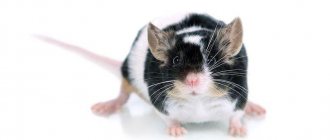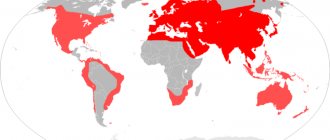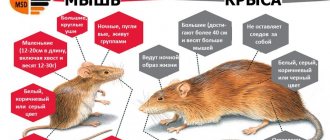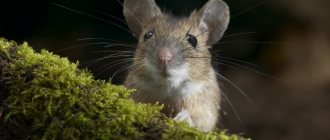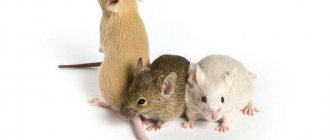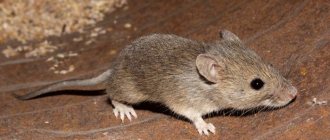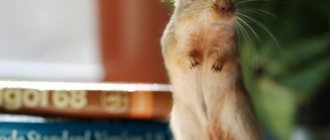The wood mouse (Aroietis uralensis) is a species of rodent in the family Muridae. Known as the dwarf mouse. Found in Armenia, Austria, Azerbaijan, Belarus, Bulgaria, China, Croatia, Czech Republic, Estonia, Georgia, Hungary, Kazakhstan, Latvia, Liechtenstein, Lithuania, Mongolia, Montenegro, Poland, Romania, Russian Federation, Serbia, Slovakia, Turkey, Ukraine .
It is about 90 mm long and is sometimes considered a pest.
What do they eat
These are, first of all, seed eaters of trees such as oak, beech, ash, linden, hawthorn, and plane tree. They eat young plants, weeds, buds, and moss. If there are a lot of seeds on the ground, they carry them into burrows for storage.
May eat small invertebrates such as snails, slugs , insects, arthropods, earthworms, caterpillars, centipedes, especially in late spring and early summer when plants are not available.
In the fall, they eat berries, fruits, mushrooms, roots, sweet corn, wheat, oats, and blackberries. In winter they can hunt bats.
What harm causes and methods of control
The wood mouse adapts very easily to various biological conditions and can colonize fields with grain crops.
They cause enormous damage to farms , destroying winter and spring crops of cultural and industrial plants over large areas, primarily rye, oats and wheat.
REFERENCE: As calculations have shown, if at the end of spring 6 pairs of mice live on arable land, then by the end of autumn, under favorable conditions for rodents, their number can reach 7-8 thousand.
They spoil agricultural crops at all stages of plant growth: they eat sown grain in the ground, gnaw out young shoots, and spoil the stems and leaves of plants.
But most of all, ripe grains of cultivated crops are destroyed. One wood mouse eats an amount of grain equal to its own weight per day.
By digging holes in the ground, they damage the root system of plants . In gardens and nurseries, mice gnaw out trunks, shoots and roots of fruit trees and shrubs, spoil and destroy ovaries, and eat ripe berries and fruits .
The problem is also that these rodents are able to spread and reproduce over a vast area of cropland in a short period of time.
Mice build a complex system of burrows with a large number of passages and several storage facilities in which they store grains of oats, wheat, rye and barley for the winter.
IMPORTANT! Wood mice are carriers of dangerous diseases such as hemorrhagic fever and leptospirosis. Fleas carried by mice can pose a very serious threat to pets.
Methods of controlling wood mice can be divided into two methods: preventive measures and direct destruction.
Preventive measures include installing various repellers and building protective barriers .
In small farms, this means laying out plants whose smell repels rodents: garlic and black root, and installing mechanical and electronic repellers.
To kill mice in a small area, their holes are filled with a special repellent solution .
But in the event of a mass invasion of rodents, radical measures must be taken. Destroying a mouse population is not an easy task; it requires an integrated approach.
For large farms with huge cultivated areas, it is necessary to contact special companies and organizations that carry out mass deratization .
Main methods of deratization:
- installation of ultrasonic repellers;
- installation of mousetraps with bait;
- glue-based traps;
- scattering of poisoned grain;
- pollination of centers of mass settlement of mice with pesticides.
To effectively exterminate rodents, all mice control measures must be used. Compliance with safety measures is also of great importance : measures to destroy mice should not harm the soil or human health.
IMPORTANT! Mice pose a major threat to harvested crops. Making their way to places where crops are stored, to warehouses with grain and flour, they destroy reserves, eating them and polluting them with waste from their vital activity.
Not only mice can cause significant damage to garden plots and vegetable gardens. We bring to your attention a series of materials about wild rats, shrews, bats, and moles. And also about insect pests: potato moths, bedbugs, Colorado beetles, chafers, mole crickets, ants, nematodes, spider mites, moths, locusts, slugs, armyworms, aphids, thrips and cicadas.
Behavior
Wood mice are active at night to avoid predation. Females may be more active during the day to collect sufficient food. While searching for food, noticeable objects such as leaves and branches are selected and distributed, which are used as landmarks during exploration.
Despite the name, they prefer hedges to forests. During the cold months, wood mice do not hibernate, but they can fall asleep and reduce physiological activity.
Females defend the nesting territory. The mouse squeals and emits ultrasonic signals during defense. Males emit ultrasound during copulation and until 24 days of age. Insensitive to red and infrared light, like badgers (they can be easily observed with a lamp covered in clear red plastic).
Find out more: The dangers of a squirrel bite, treatment and prevention
Feeding decorative pet rodents
Inexperienced owners of ornamental animals have the most common question about what mice eat, and whether they can be fed with scraps from the human table.
Compared to their free-living counterparts, the rhythm and living conditions of pets are noticeably different. Therefore, you cannot give the animal everything and expect it to be healthy. Food should be varied, balanced, contain the required amount of vitamins, microelements and not harm the animal’s body. This takes into account:
- age of the rodent;
- his weight;
- view;
- health status.
Full advice regarding the nutrition of a particular animal can be obtained from a veterinarian or breeder.
Ready-made feed
Buying special mixtures is convenient and profitable. Moreover, they contain everything that mice love to eat. Among the variety of foods offered in pet stores, it is difficult to choose the right one.
Feed
You need to know that they are divided into categories:
- Super premium class. The highest quality product with a predominant content of wheat and animal proteins with low fat content.
- Premium class. Less expensive food. It may not contain any components necessary for a rodent, but this is easily compensated for by feeding, which should be given once a week.
- Economy class. The cheapest option, consisting mainly of not the most healthy grain crops.
When choosing food, you need to pay attention to the manufacturer (foreign manufacturers are considered the best) and the composition of the mixture. A combination of several types of grain, meat and vegetable additives would be ideal. The presence of food coloring is contraindicated. The packaging must be sealed from polyethylene or foil so that insects cannot get inside.
The female feeds newborn babies with milk. They do not require additional food until they are 3 weeks old. Then the granules are soaked in water in small quantities and placed in a cage, thereby teaching the mice to eat solid food. At the age of one month, they already switch to food for adults.
Natural diet
If for some reason you decide to keep your animal on natural products, then first of all you need to stock up on cereal grains. In the mixture, preference is given to wheat, adding oats, barley, rye, and millet.
By type of nutrition, the mouse is an omnivorous mammal, so animal proteins should be given once a week. For example, a piece of egg, boiled lean meat without salt and spices, fish. At the pet store you can buy dried freshwater crustaceans, which rodents love.
Peanuts, sunflower seeds, and walnuts are given with great caution. These are fatty foods that are bad for the health of mice. Their daily intake should be strictly limited.
Vegetables, fruits, and berries are given fresh or dried 2-3 times a week in small portions.
Brown bread crackers are offered to pets no more than 1–2 times a month, 1 piece at a time.
It is useful for the teeth to give the animals branches of coniferous trees, rowan, apple, and pear.
Occasionally, pets are fed low-fat cottage cheese; this is a good source of calcium.
Prohibited Products
Mice should absolutely not eat:
- Everything that was fried was smoked and salted.
- Sweets. These include sweets, chocolate, ice cream, cookies, pies, and cakes.
- Any spices, as well as onions and garlic.
- Citrus and exotic fruits.
- Tomatoes.
- Poisonous herbs.
Sometimes an animal may have an individual intolerance to a certain product, then the diet is adjusted.
Life cycle, how long they live
The wood mouse has a breeding season from March to October, when many matings occur between individuals of different sexes, leading to competition and fighting.
The gestation period of wood mice is 25–26 days, the female gives birth to five cubs, naked and blind. The pups become independent in about three weeks, and ready to reproduce in two months.
Lifespan – 18 – 20 months. Mortality is very high in the spring among those who spent the winter. In juveniles it increases in spring and summer after mating fights.
Appearance of a wood mouse
Rodents are similar to each other in many ways. It is difficult for an ordinary person to notice the difference between animals. But each type of mouse has its own individual characteristics. It is enough to study in detail the structure of the mouse’s body, and it becomes clear that the forest animal is practically unlike a domestic or field inhabitant.
Length
This type of rodent is larger in size than those individuals that live next to humans. The mouse grows up to 10–12 cm in length. In rare cases, the animal grows only up to 8 cm. In this case, the young offspring reach the size of an adult by four months.
Tail
The length of the tail is proportional to the length of the body. But in some cases it differs more or less. This factor does not depend on the health of the rodent or other factors. The color of the tail matches the color of the body.
Coat and color
Most often, forest mice are red-colored, with a brown spot running along the back that does not have obvious outlines. The predominant color on the belly is white, but the tint may also be yellowish. A distinctive feature in the description of a wood mouse is the presence of a bright yellow spot on the chest, which has the shape of a stripe or a small oval.
Important! In winter, the rodent is covered with thicker fur, and the color changes to dark.
Torso and limbs
The average weight of a rodent is 200 g. Some individuals grow up to 300 grams. Compared to the body, the head is large. The muzzle is pointed. There are large bulging eyes on it, similar to peppercorns.
Important! The main feature is the size of the ears - they reach 2.2 cm in length.
Presence indicators
The droppings of a forest mouse are larger than those of a common mouse (3 – 5 mm). The animal holds the seeds between its front paws to gnaw and leaves them behind. You can find teeth marks on the edges of holes drilled into hazelnuts.
Eats the peel of rose hips, neglects the flesh. Opens snail shells at the base. Makes blanks under upside-down trunks, in cracks, holes, and old bird nests.
Fingerprints: Rarely visible. It has 4 toes on the front paws and 5 on the hind paws (more than the house mouse, vole ).
The pest is very agile. Can make large jumps if pursued (up to 80 cm). Can climb trees. The wood mouse suffers from environmental pollution, especially if it lives on the outskirts of roads.
What else can you supplement your diet with?
To prevent decorative mice from having problems with teeth grinding down, in addition to the main food, it is advisable for them to occasionally gnaw on pieces of spruce and pine needles, as well as tree branches:
- aspen;
- hazel;
- apple trees;
- and you;
- rowan.
The branches should be young and juicy, with high nutritional and taste properties.
It is advisable to supplement the diet of ornamental rodents with the following products:
- boiled meat (including well-processed spongy bones and cartilage);
- egg powder (or crushed boiled eggshells);
- milk and dairy products;
- cheese (in limited quantities);
- fresh lard;
- mineral additives (chalk, salt);
- fish oil;
- yeast;
- nuts (except peanuts).
Nutrition
The wood mouse prefers to eat nuts and acorns. The basis of the rodent's diet is plant food: grains and seeds, foliage, berries, mushrooms. But sometimes the animal hunts for small insects or may attack a clutch of bird eggs. Mouse nutrition directly depends on the season:
- During the shedding of acorns, the rodent eats them exclusively.
- During the period of hazelnut ripening, the individual tries to go out to the trees more often and pick up fallen fruits.
- In the absence of nutritious foods, the mouse can eat mushrooms. The rodent avoids toadstools, fly agarics and poisonous fruiting bodies, giving preference to russula, boletus, chanterelles and other noble mushrooms.
In winter, rodents eat reserves. Each individual can store about 5 kg of food in its house. Products include berries and fruits, a large number of grains, seeds, mushrooms and even pine cones. In this case, the mouse takes for storage only fresh, undamaged food, which can lie in the hole until spring.
Important! If a wood mouse has not stored the required amount of products for the winter, then it can move closer to humans. In some cases, the animal goes out in search of food from its neighbors.
conclusions
Mice are animals that are classified as pests. They are capable of destroying crops and causing damage to garden trees and other plants. Large populations of rodents can eat the seeds of deciduous trees, ultimately leading to environmental problems. In addition, rodents are carriers of dangerous diseases.
A person who is bitten by a wood mouse may be at risk of contracting the following infections:
When thinking about what mice eat, people usually remember cartoons, illustrations from children's books and advertisements where these animals are ready to do any kind of madness for a piece of cheese. However, for tens of thousands of years such a product did not exist, and even now it cannot be found in nature, so it is obvious that mice eat a completely different food.
Narrow skull
Appearance: The body is much larger than the small head, the ears are hidden in gray-brown fur. The color of the light patches of fur ranges from ocher to dark brown. The tail is long, body length is up to 125 mm.
Distribution: open areas of mountainous regions, alpine meadows, Kazakhstan, central Mongolia, Bashkiria, southern regions of northwestern China, western Urals, Amur, Tien Shan region.
Food: sedge, broad-leaved grasses, legumes, young shoots, bark of young trees.
Reproduction: up to five litters with 5-7 cubs.
Features: they are capable of independently searching for food on the 10th day of life; in preparation for winter, they make large reserves.
Possible harm to farmers: the vole can destroy grain fields for its own reserves and damage orchards.
